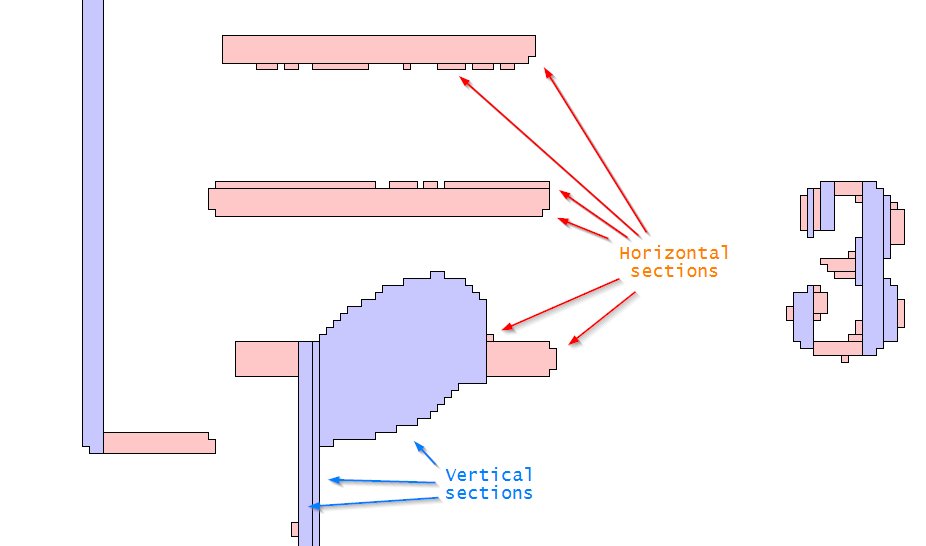Pixels assemblies
The BINARY step transforms the input image into a black and white image. From this step on, the image will contain only black (foreground) pixels on a white background.
A (black) pixel is just a black square, of dimension 1 x 1, located at some point (x,y).
Depending on what the engine has to process (staff lines, stems, beams, etc), the same pixels can be viewed through one structure or another.
Run and RunTable
A horizontal (or vertical) contiguous sequence of pixels of the same color is called a horizontal (or vertical) Run.
In the same alignment, such run is followed by a run of the opposite color, and so on, until the image border is reached.
A RunTable is a rectangular area, made of sequences of run’s, all of the same orientation.
Typically, the whole binarized image can be considered, at the same time, as:
- a table of horizontal
run’s - a table of vertical
run’s
Section and LAG
It can be interesting to transitively join adjacent (black) run’s of the same orientation, according to some compatibility rules.
Each such resulting assembly is called a Section.
Typical compatibility rules are:
- Maximum difference in
runlengths - Maximum ratio of difference in
runlengths - Maximum shift on each
runend - Void rule (no check, except adjacency)
Sections are gathered into LAG’s (Linear Adjacency Graphs).
Just like a RunTable gathers Run’s of the same orientation, a LAG gathers Section’s of the same orientation.
Sections example

The picture above can be displayed once the GRID step has been performed. We select the “section” view  via the
via the View → Switch selections pull-down menu or the F11 function key.
Based on the maximum staff line thickness (previously determined by the SCALE step), this picture combines sections from two different LAG’s:
- From the vertical
LAG, all the (vertical) sections with length greater than the maximum line thickness are displayed in pale blue. - From the horizontal
LAG, the remaining pixels are organized in (horizontal) sections and displayed in pale pink.
Filament
A Filament is a dynamic assembly of sections, long and thin, likely to represent lines.
The engine uses:
- horizontal filaments to detect staff lines and ledgers alignments,
- vertical filaments to detect stems and legs of endings.